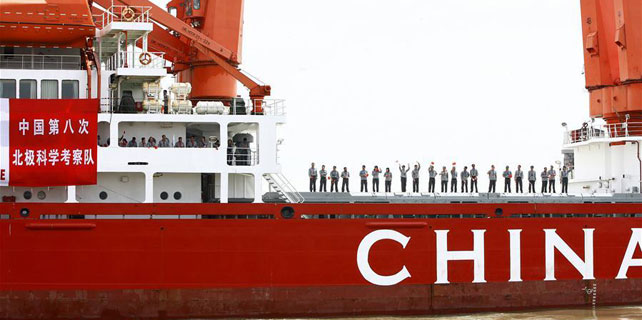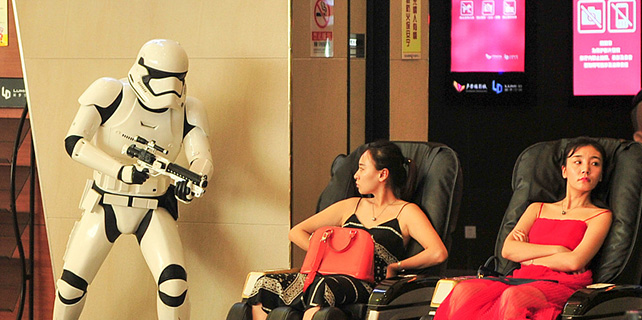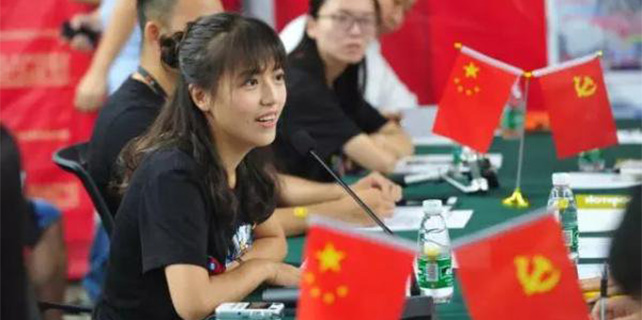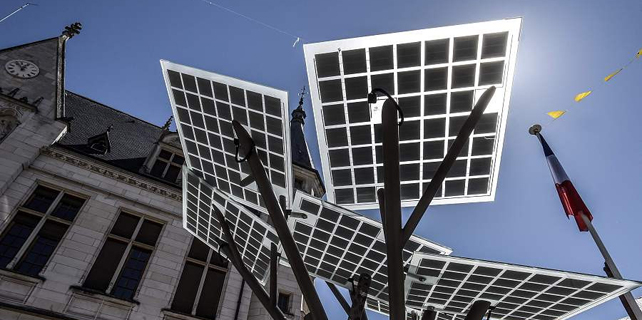A visual journey back in time

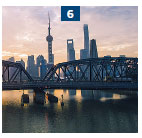
1. HSBC Building
Situated at No 12 Zhongshan Dongyi Road, the HSBC Building is a five-floor building that was designed by GL Wilson of Palmer & Turner and constructed in 1923. It has the widest facade on the Bund, occupies the largest land area (5,174 square meters) and has a floor space of 23,746 square meters. The building once served as the headquarters of the Shanghai branch of the Hong Kong and Shanghai Banking Corporation. It is currently home to the Shanghai Pudong Development Bank.
There is a pair of bronze lions at the entrance to the HSBC Building. The sculptures in front of the building today are replicas. The original ones are being kept in the Shanghai History Museum.
2. Customs House on the Bund
Designed by GL Wilson of Palmer & Turner, the Customs House features three transversal and vertical sections and the Greek-style decorations. The entrance of the building has a copper cast gate and four columns which represent simplicity and energy.
The clock tower is the most distinctive part of the Customs House. The clock was manufactured by a British company. Because of its resemblance to the Big Ben in London, the clock tower was once nicknamed the "Big Qing".
3. Palace Hotel
Constructed in 1908, the Palace Hotel is one of the oldest hotels in Shanghai. It was once the tallest building in Shanghai following its upgrade from a three-story structure. It can be found at No 19 Zhongshan Dongyi Road.
The Palace Hotel is famous for being the city's first rooftop garden which initially featured several Baroque towers. However, a fire at the northwest corner of the roof caused serious damage to the garden in 1912 and most towers were not restored until 1998.
The International Opium Commission once held a conference in the Palace Hotel in 1909. This was also the venue where officials in Shanghai gathered in 1911 to welcome Sun Yat-sen who led the historic revolution that ended the old feudal monarchy in China. The Palace Hotel was among the first buildings in Shanghai to be equipped with an elevator, heating equipment and advanced sanitary facilities.
4. The Sassoon House
The Sassoon House, located on No 20 Zhongshan Dongyi Road, was once named the "No 1 Building in the Far East". It was built using investments by Victor Sassoon, a British national from a Jewish family that was once the richest in Baghdad.
After World War I, the Sassoon Family transferred large amounts of funds out of China and this resulted in problems with operating and maintaining the building. The Sassoon House was later taken over by the Shanghai government in 1952. It was reopened in 1956 following repairs and was renamed Peace Hotel.
5. The Bank of China Building
The Bank of China Building on No 23 was originally the property of a foreign firm before it was bought by a German organization. It was confiscated by the Chinese government after World War I in 1917 and the Bank of China later purchased it with 630,000 silver dollars (an ancient Chinese currency). The construction of the building was suspended for four years from 1939 to 1943 during the War of Resistance Against Japanese Aggression and the bank was forced to move inland. It was completed in 1944.
The Bank of China is the only building on the Bund to sport traditional Chinese characteristics. The embossment on the lintel above the main entrance previously featured Confucius but was changed to depict a crowd of people after it was damaged.
6. The Garden Bridge
Built in 1907, the Garden Bridge was the earliest large-scale steel truss bridge in China for trams. Despite being more than a century old, the bridge is still in sound condition thanks to a number of renovation works through the years.
One of the major problems foreign architects faced during the initial phase of construction was extracting the bridge piles driven into the depths of the creek when erecting the previous wooden bridge. A Chinese contractor named Zhou Ruiting successfully solved this problem using the principle of ebb and flow.
caochen@chinadaily.com.cn









